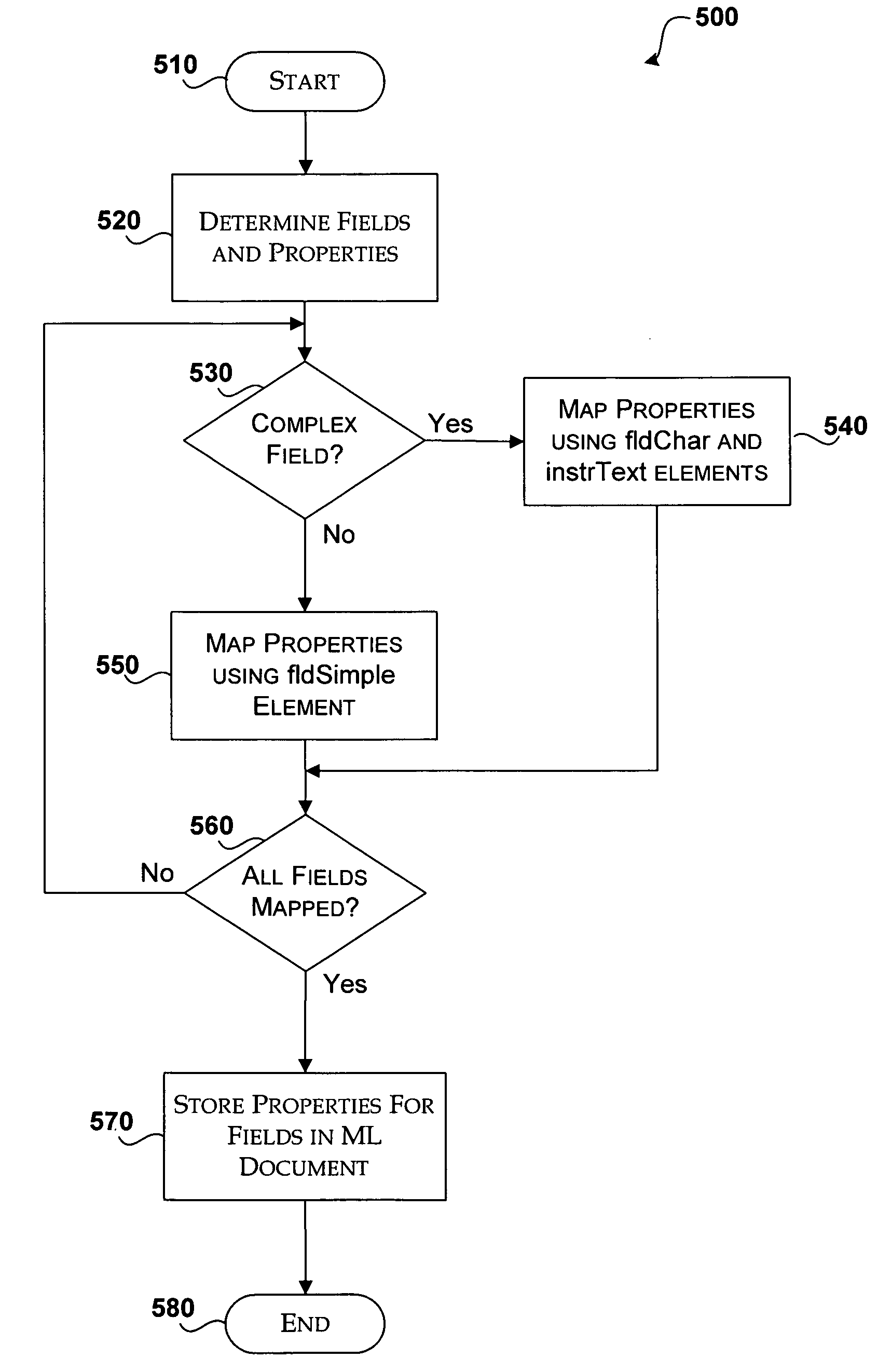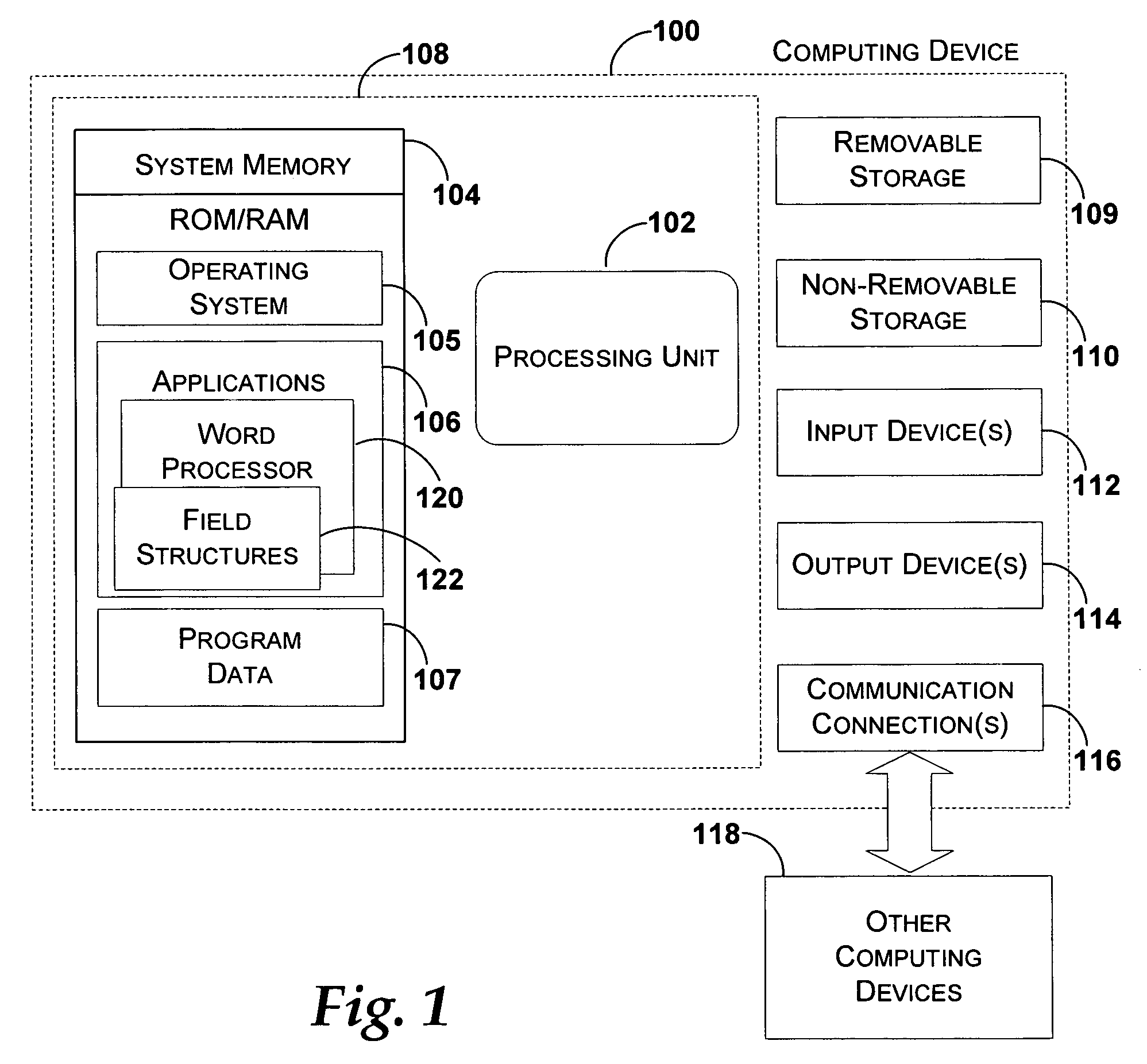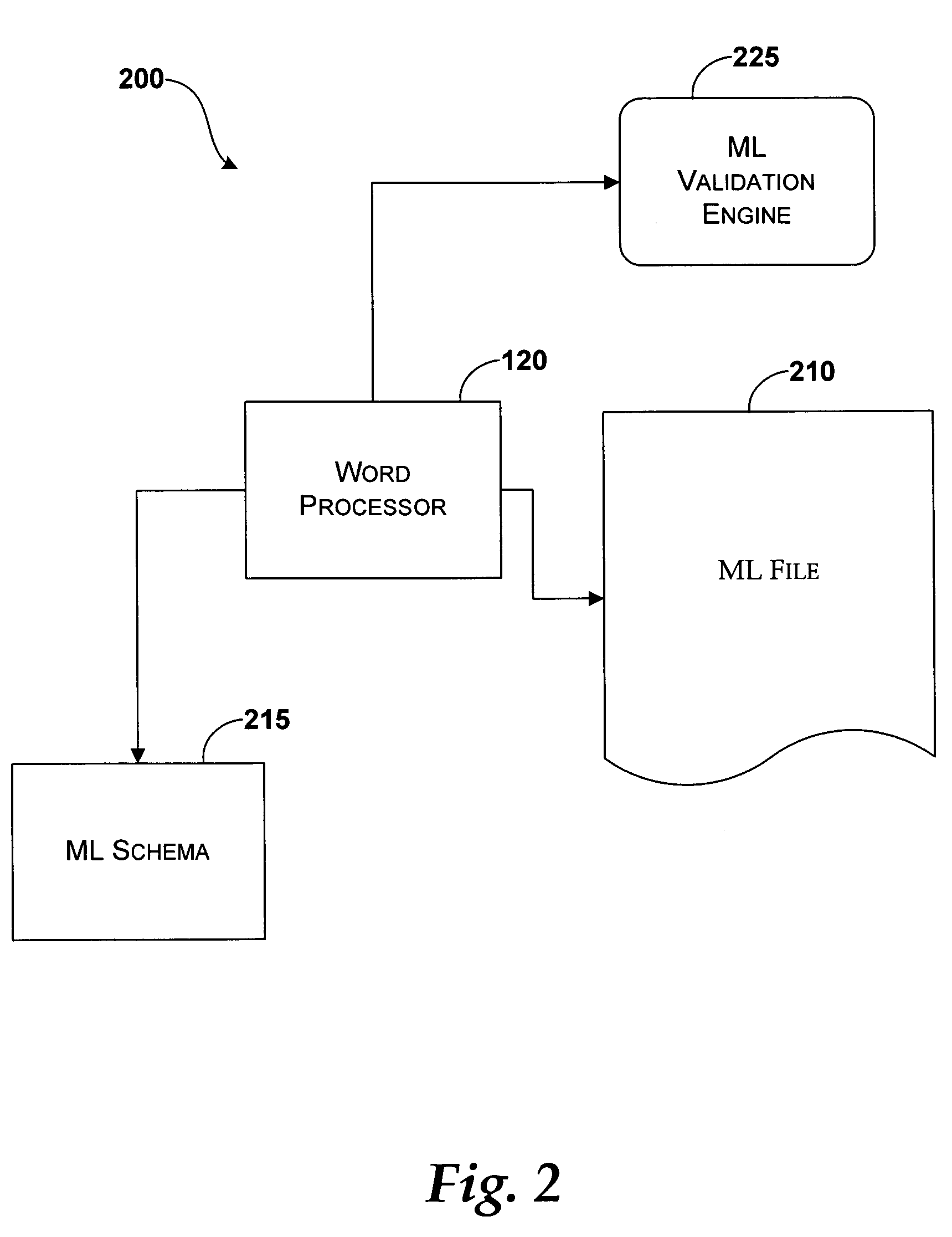Representing fields in a markup language document
a markup language and document technology, applied in the field of markup language documents, can solve the problem that a large amount of the functionality available in word processor documents is not currently available in xml documents
- Summary
- Abstract
- Description
- Claims
- Application Information
AI Technical Summary
Benefits of technology
Problems solved by technology
Method used
Image
Examples
Embodiment Construction
[0013]Throughout the specification and claims, the following terms take the meanings explicitly associated herein, unless the context clearly dictates otherwise.
[0014]The terms “markup language” or “ML” refer to a language for special codes within a document that specify how parts of the document are to be interpreted by an application. In a word-processor file, the markup language specifies how the text is to be formatted or laid out, whereas in a particular customer schema, the ML tends to specify the text's meaning according to that customer's wishes (e.g., customerName, address, etc). The ML is typically supported by a word-processor and may adhere to the rules of other markup languages, such as XML, while creating further rules of its own.
[0015]The term “element” refers to the basic unit of an ML document. The element may contain attributes, other elements, text, and other building blocks for an ML document.
[0016]The term “tag” refers to a command inserted in a document that de...
PUM
 Login to View More
Login to View More Abstract
Description
Claims
Application Information
 Login to View More
Login to View More - R&D
- Intellectual Property
- Life Sciences
- Materials
- Tech Scout
- Unparalleled Data Quality
- Higher Quality Content
- 60% Fewer Hallucinations
Browse by: Latest US Patents, China's latest patents, Technical Efficacy Thesaurus, Application Domain, Technology Topic, Popular Technical Reports.
© 2025 PatSnap. All rights reserved.Legal|Privacy policy|Modern Slavery Act Transparency Statement|Sitemap|About US| Contact US: help@patsnap.com



